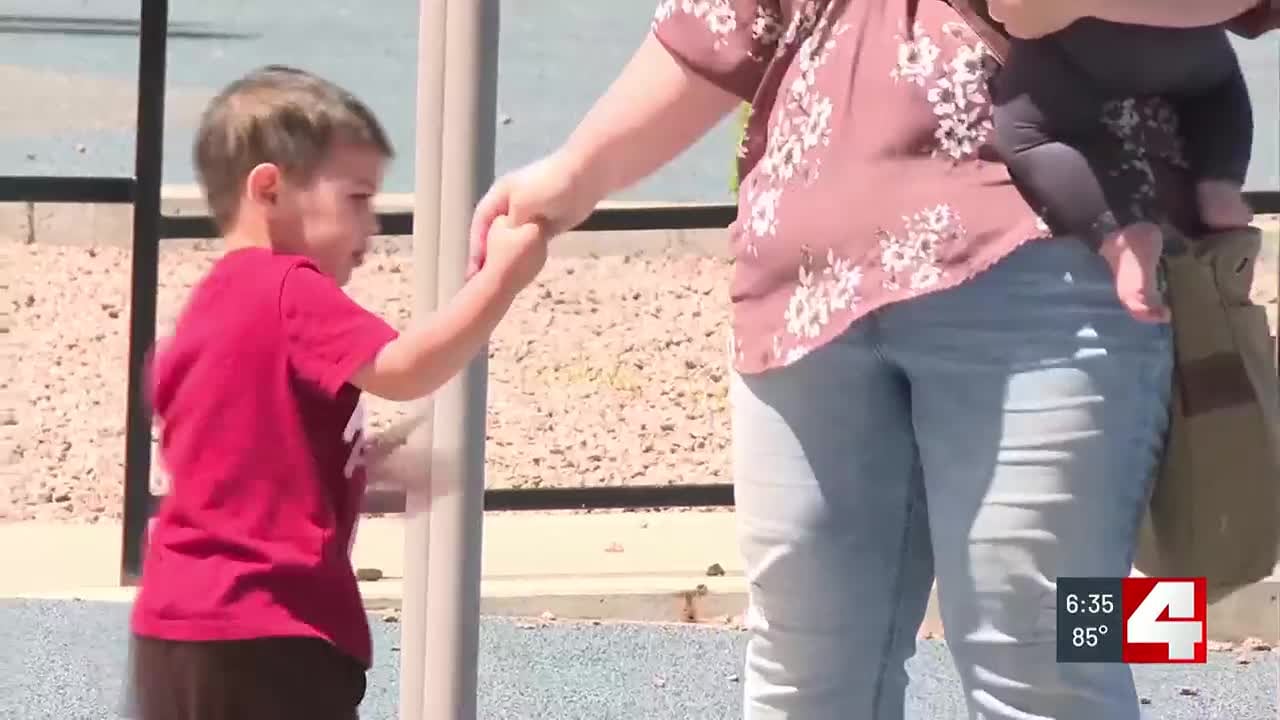Breakthrough hair test offers insight into autism in children; St. Louis-area mother shares impact

FARMINGTON, Mo. (First Alert 4) - A revolutionary new test that analyzes just a strand of hair is being hailed as a game-changer in the early detection of autism.
Known as the Clearstrand-ASD test , the non-invasive method analyzes biological markers found in hair to help determine whether a child may be at risk for autism spectrum disorder (ASD). It can rule out an ASD diagnosis in children as young as one month old.
For Kimberly Vielma , a Farmington mother of four and full-time ER nurse, the test offered a new window into her children’s development and provided clarity at a time when questions outnumbered answers.
“Every day looks different,” Vielma said, describing the routines and challenges her family manages. Vielma’s two oldest sons, Vinny and Maxwell, have been diagnosed with level 3 autism, the highest level, which requires substantial support.
Vinny, 8, has, by choice, been on a liquid diet for years due to personal preferences.
Maxwell, 7, is nonspeaking and developmentally delayed.
Their needs are vastly different, Vielma said, even though their diagnoses share the same classification.
“A diagnosis is just a word on a piece of paper, so I can get the resources I need,” Vielma explained. “Vincent is still Vincent. Maxwell is still Maxwell.”
To better prepare for the potential needs of her two youngest children, Elijah, 2, and Mary, nine months, Vielma turned to the Clearstrand-ASD test. Developed by Manish Arora, Ph.D. and his team at LinusBio Technologies , the test uses advanced robotics and lasers to extract molecular information from a single strand of hair.
“Inside the hair is all that precious information,” Arora said, “all the molecules that help us identify whether a child is headed toward an autism diagnosis or not.”
Arora told First Alert 4 he spent decades developing the technology while working at Mount Sinai School of Medicine.
The test, which currently costs $499 , can provide results within weeks. Arora says it is safe, non-invasive and it has received the ‘breakthrough’ designation by the U.S. Food and Drug Administration.
Vielma said she tested Elijah and Mary and was fascinated by the results: Mary’s test came back ‘negative,’ while Elijah’s was ‘not negative,’ suggesting he may show traits of autism.
“Even that day after I got those results, I started noticing things differently,” Vielma said. “Was the lighting too bright? Were there things I hadn’t considered before that might be affecting [Elijah]?”
According to Autism Speaks, the average age of an ASD diagnosis is around five years old. Elijah’s ‘not-negative’ result came years before that.
The test offers something researchers say is critically needed: objectivity. According to the CDC , white children are more likely to be diagnosed with autism than Black or Hispanic children, and boys more often than girls, due in part to disparities in access to care, underrepresentation in research and the different ways girls may present symptoms.
Despite the disparity, diagnoses are on the rise. A recent study published in JAMA Network Open reports a 175% increase in ASD diagnoses over the past decade. The data comes as top government officials call autism something that ruins families.
“One of the things that I think we need to move away from today is this ideology that the relentless increases [of autism diagnoses] are simply artifacts of better diagnoses better recognition or changing diagnostic criteria,” said Robert F. Kennedy, Jr., Secretary of the U.S. Department of Health and Human Services.
“Yes, cases are rising, everyone agrees on that,” Arora said. “We disagree on the reasons, but as more people are diagnosed, they deserve services. We want them getting that support.”
Regardless of the reasons behind that trend, one thing is clear: tools like the Clearstrand test are making early detection more accessible than ever.
Still, Vielma emphasizes her focus is not on finding a “cure” for autism but on understanding her children better.
“Any parent has pressure to do everything they can for their kids,” she said. “When you have children with support needs, that pressure grows. You have to change your outlook on what your new reality is.”
For Vielma, progress is found in the little things, like Maxwell, who now says “I love you” and “It’s okay,” phrases she once thought she’d never hear.
“His diagnosis gave me the tools to make that possible,” she said.
As science moves forward, families like the Vielmas are navigating each breakthrough with hope, resilience, and a simple desire: for their children to be seen, supported, and understood.
To learn more about ClearStrand, click here .
Vielma has also started a podcast to better help other parents navigate their child’s ASD diagnosis. Click here to learn more.
Komentar
Posting Komentar